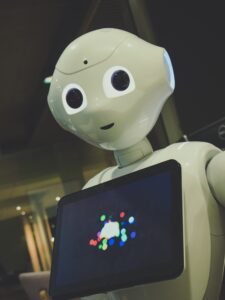Page Contents
Ageing population is real and soon will be a major issue in many countries in coming years. Many eldercare facilities are starting to adopt and rely on technology to ensure better care quality and to cope with shrinking carer workforce.
The challenges we are facing now
The three main challenges many eldercare facilities facing with technology are:
- Availability of suitable technology
- Infrastructure readiness for technology
- Tech-savviness of users in both healthcare workers and elderly people
The current elderly cohort may not be fully receptive to technology, but in the next 10 – 20 years, when the Gen X (born in 1965 – 1980) approaching young-old age (65 – 74 years old), the situation will be very different. This also means the future eldercare facility that is not tech-enable will be left behind and may lose out of competition.
Eldercare technologies
In view of manpower shortage and the need to increase service standards, a wide range of eldercare technology are developed for different purposes. Below are some examples:
- Health monitoring
Wearables or trackers (watch, bracelet, lanyard, ring, etc.) are getting very common, they can read signals of your vital signs such as heart rate, blood oxygen, blood pressure, some also detect your movement, fall risk, and sleep patterns. The data captured will then be analysed and recorded of monitoring.

- Mental well-being
Loneliness and social isolation among the elderly population is a serious concern, in some countries, 1 in 3 older adults is living alone. This has put their personal safety and mental well-being at risk. In some eldercare facilities, instead of having a real pet that may post risk of infection, they are letting the elderly people play with robot pets. Results show that robot pets can help to calm the elderly and improve their mental well-being.
- Communication
Tele-conferencing technology has enable us to connect with people more easily especially during these few years of COVID pandemic. This technology has also provided elderly people the convenience to connect with family and access medical consultation without physically visiting them.

- Personal safety
Most older adults have slower reflexes than younger people. Accident rate on slip-trip-fall is usually higher among elderly people and it can take longer duration to heal and regain normal functionality. Hence, it is crucial to pay close attention to their personal safety at all time. Through AI-embedded sensor technology, it can greatly reduce the fall incident by learning from the postures, predicting the outcome and alerting the carer in advance.
- Entertainment
In recent years, many eldercare homes have brought in social robots to their facilities. Social robots serve different functions, such as dancing, greeting with simple conversation, exercising, serving drinks, etc. There is a mixed reaction among the elderly people, some find it quite entertaining, some feel it is annoying, and some are less receptive.

- Quality of life
There has also been many new technologies introduced to elderly people to improve their quality of life. For example, voice-activated devices that can command home appliances, robotic arm to feed stroke patients, realistic virtual tour to let elderly tour around different countries, and also automated bathing system to assist elderly in bathing.
There are literally countless technologies that can be listed here. In future blog article, we may look into the available eldercare products, and share with you the pros and cons.
Singapore’s Home Improvement Programme (HIP)
Aside from the above technologies, it is important not to forget the very basic needs of the elderly, making sure they are safe and can enjoy better quality of life around their living environment.
In Singapore, the Housing Development Board is taking proactive steps to introduce home modification programme for the elderly people, namely Enhancement for Active Seniors (EASE).
Through this programme, households with elderly occupant will get the following installations to make homes safer, more elderly-friendly, improve mobility and comfort.
- Anti-slip treatment on floor tiles in the bathrooms or toilets
- Grab bars
- Ramps within flat and at main entrance (for elderly with mobility limitations)
Conclusion
As much as these technologies can make life easier by overcoming the shortage of manpower and increasing productivity, they are still lacking the most important element.
At the end of the day, what the elderly people really want, is to have someone (befrienders or family members) to be presence, talk to them, and spend quality time with them instead of the fancy but cold devices.
What I envision should have in an eldercare facility is the interaction between elderly and young children, such that the elderly have companion, while children learn to engage and respect them.
